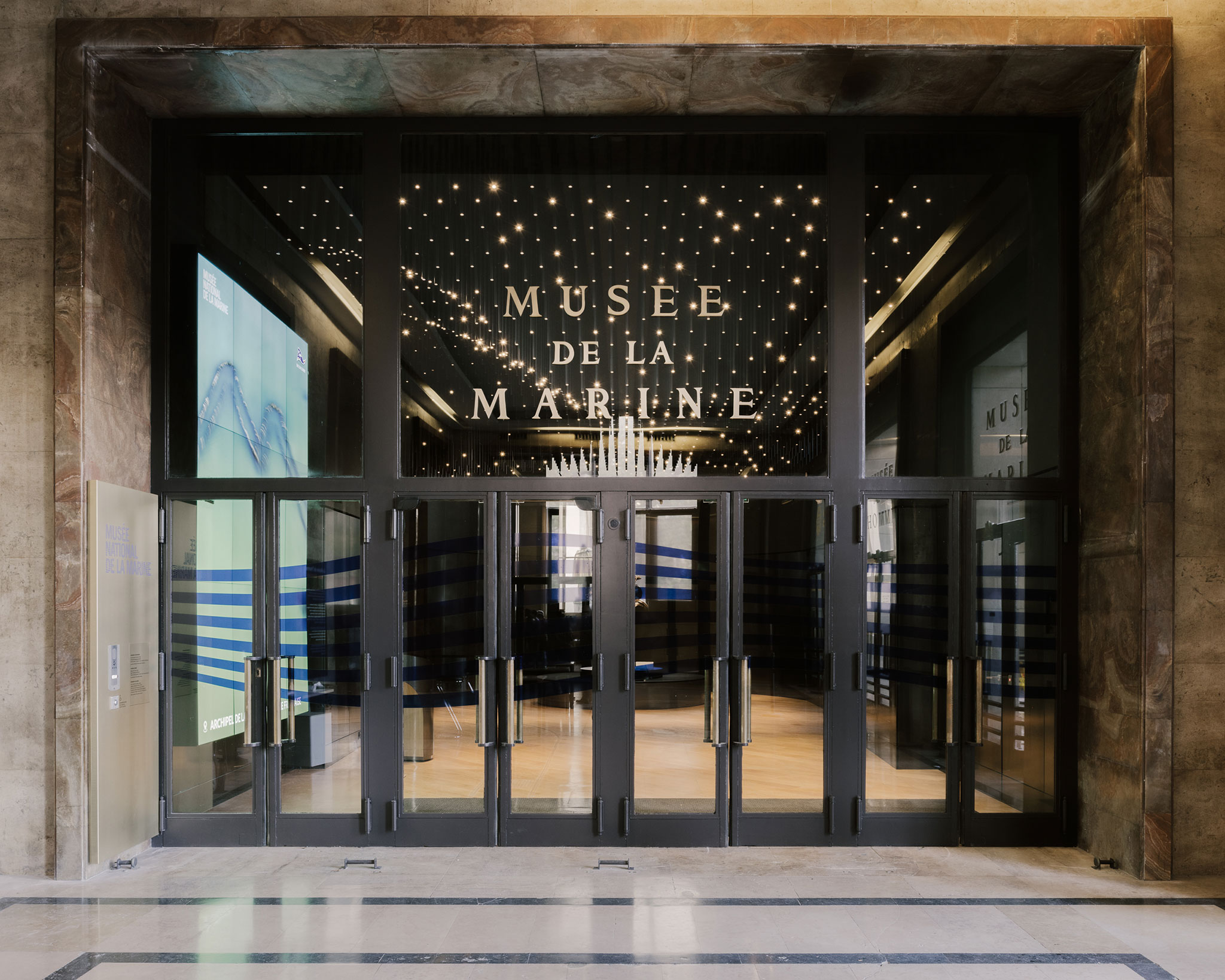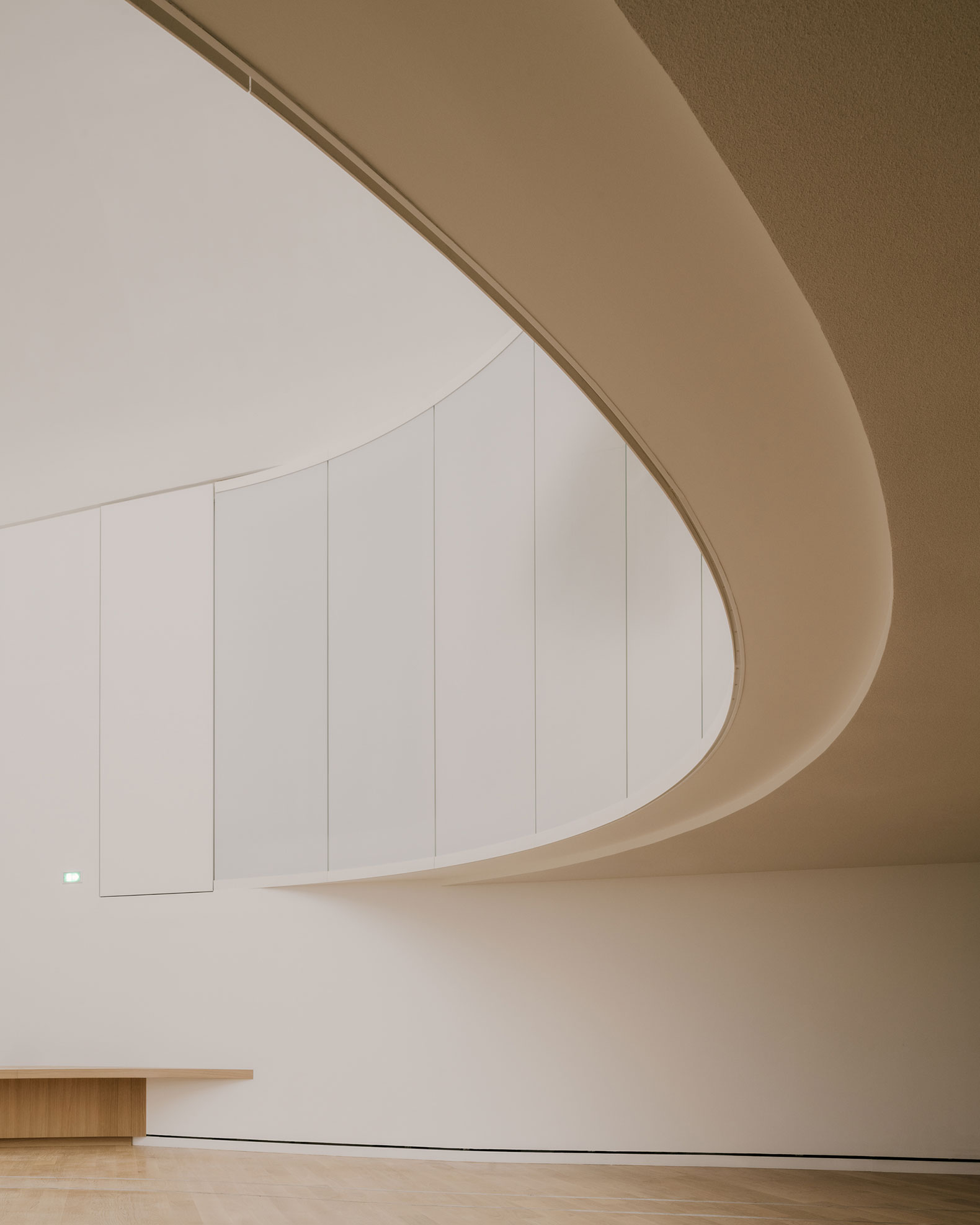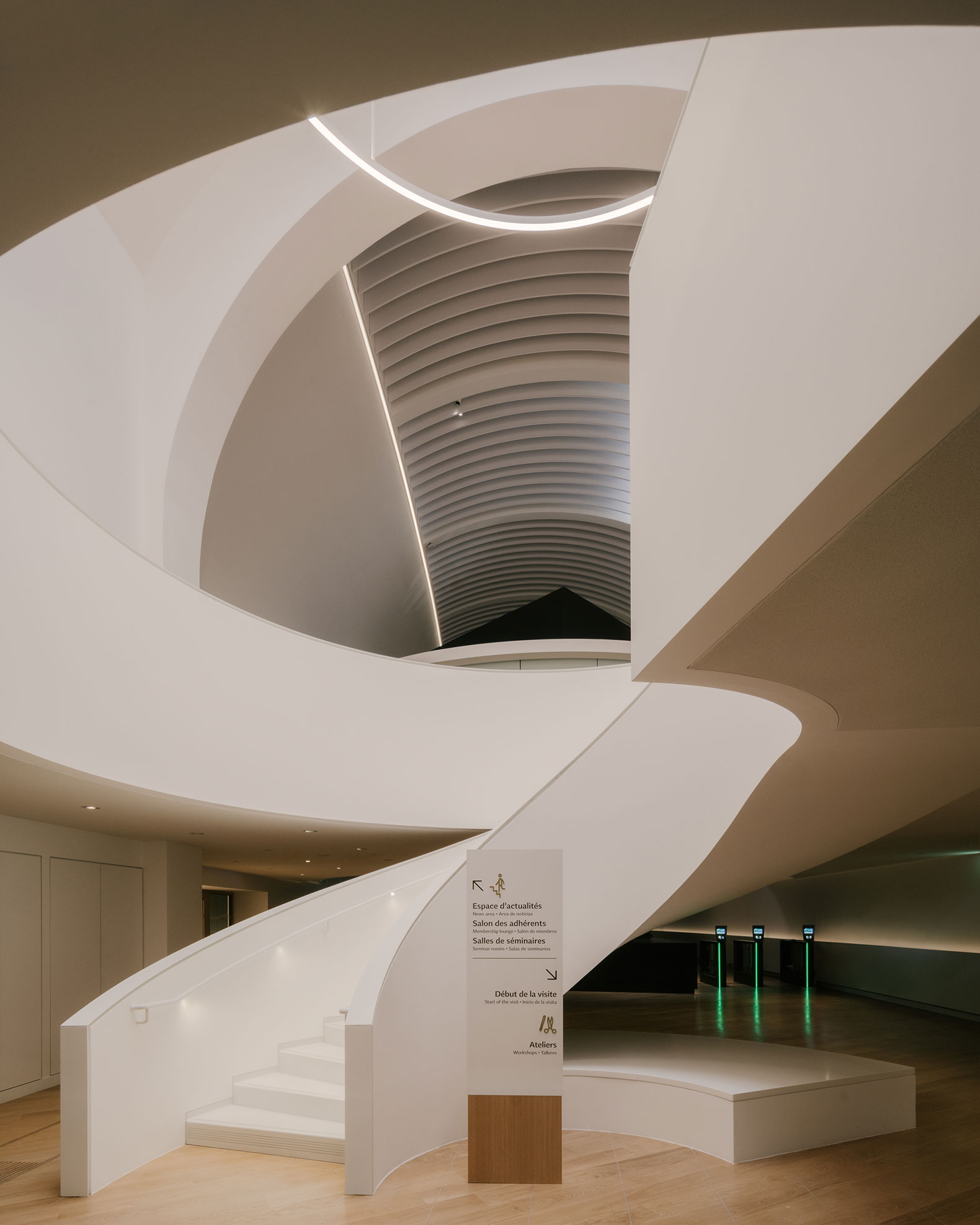The building is made up of curved shapes that dialogue with the existing geometry and refer to the movement of the sea, while generating a fluidity of spaces and facilitating circulation. The aim is to generate for the visitor an immersive experience with several possible paths that combine historical and contemporary architecture by reopening a historical staircase from the original 1878 project and integrating it into the itineraries of the temporary exhibitions.
The visit begins in the lobby to immerse the viewer in the experience until reaching a bright and spacious high-rise room, from which you can access the rest of the program, such as the exhibition space, restaurant, bookstore, store, seminars and auditorium. . A set of transparencies, inspired by the 1937 project, is generated in the Galerie Davioud that gives access from the generated mezzanine to a press room, a members' lounge and an exhibition space. On the façade, a double wall is generated to house the exhibition installations and in other areas of it, specific openings are generated, together with the oculus of the final space, which allows an interior and exterior visual relationship.

Renovation of Musée national de la Marine by h2o architectes and Snøhetta. Photograph by M Verret.

Renovation of Musée national de la Marine by h2o architectes and Snøhetta. Photograph by M Verret.
Project description by h2o architectes and Snøhetta
The revitalized maritime museum in Paris opened to the public on the 17th of November after six years of restoration.
The ambition behind the renovation was to rethink the organization within the museum’s services by offering visitors and employees a functional environment for work, discovery, and exchange.
The design of the new museum is characterized by curved and circular forms, in keeping with the existing geometry of the building and subtly referencing the natural movement of water. This dynamic architectural movement facilitates circulation and connectivity between spaces and encourages more fluid interaction.
Musée national de la Marine is the main French institution entirely dedicated to French maritime history and hosts an important collection of paintings, models, and maritime artifacts.

Renovation of Musée national de la Marine by h2o architectes and Snøhetta. Photograph by M Verret.
It is located in the historic Palais Chaillot, which was built in 1878 and subsequently restructured by architects Carlu, Boileau and Azéma for the 1937 World’s Fair and is protected by its heritage status. h2o architects and Snøhetta has worked hand in hand in renovating the building by establishing a close dialogue between the building’s successive construction states and a renewed, contemporary vision of the maritime world and its challenges.
A streamlined visitor journey is created by reopening a historic staircase that dates from the original 1878 project, and integrating it into both the temporary and permanent exhibit itineraries. These same spaces are punctually opened to the world outside, in keeping with the twofold aim of reconstituting the volumes of the 1937 design and of anchoring the museum in the surrounding environment.
Museum and exhibition design practice Casson Mann has created an imaginative and accessible visitor experience for the Musée national de la Marine. With a vision to bring the sea to Paris, Casson Mann’s scenography evolved in direct response to the extraordinary scale and fluidity of the museum’s original curving galleries.

Renovation of Musée national de la Marine by h2o architectes and Snøhetta. Photograph by M Verret.
In the renovated museum, visitors are guided on an immersive and intuitive journey with several possible pathways. Like the ebb and flow of waves, the new visitor experience weaves together contemporary and existing elements, recounting the history of this prestigious institution with renewed vitality. The coexistence of historical and contemporary architecture carries the visitor’s imagination beyond the walls of the museum to wider and more distant shores.
The visit begins in the intimate, quiet atmosphere of the vestibule, progressively immersing the visitor in the world of the museum before moving into the heart of the luminous, spacious full-height hall, from which one can directly access the museum’s various services, such as exhibit space, restaurant, bookshop and boutique, seminar rooms, and auditorium.
The play of transparency reveals the graceful curves of the Galerie Davioud – inspired by its 1937 layout - and provides a glimpse of the functions associated with the newly created mezzanine levels, including a pressroom, members’ lounge, and exhibition space. A double wall creates a functional transitional space, housing technical devices required for exhibit installation and the thermal envelope.

Renovation of Musée national de la Marine by h2o architectes and Snøhetta. Photograph by M Verret.
The reopened staircase streamlines the visitor experience by creating multiple possible pathways between the plaza and garden levels. The position of the building, nestled in the hillside between the Trocadero Plaza and Gardens, is revealed through punctual façade openings and the creation of an oculus in the end pavilion, which establishes a visual connection between the two levels.
"Snøhetta is honored to have contributed to the reinvention of the iconic Musée National de la Marine and the renewal of its important heritage of France's relationship with the world's oceans, which ultimately connect us all.
The collaboration with h2o architectes and their understanding of French history and built heritage has been a true source of inspiration.
We now look forward to seeing the public make the museum's spaces their own and rediscover the vast collections that the institution houses. This will reaffirm the museum's important role in creating a contemporary perception of history, providing a deeper perspective on the future".
Kjetil Trædal Thorsen, Founding Partner, and Architect Snøhetta.
























































